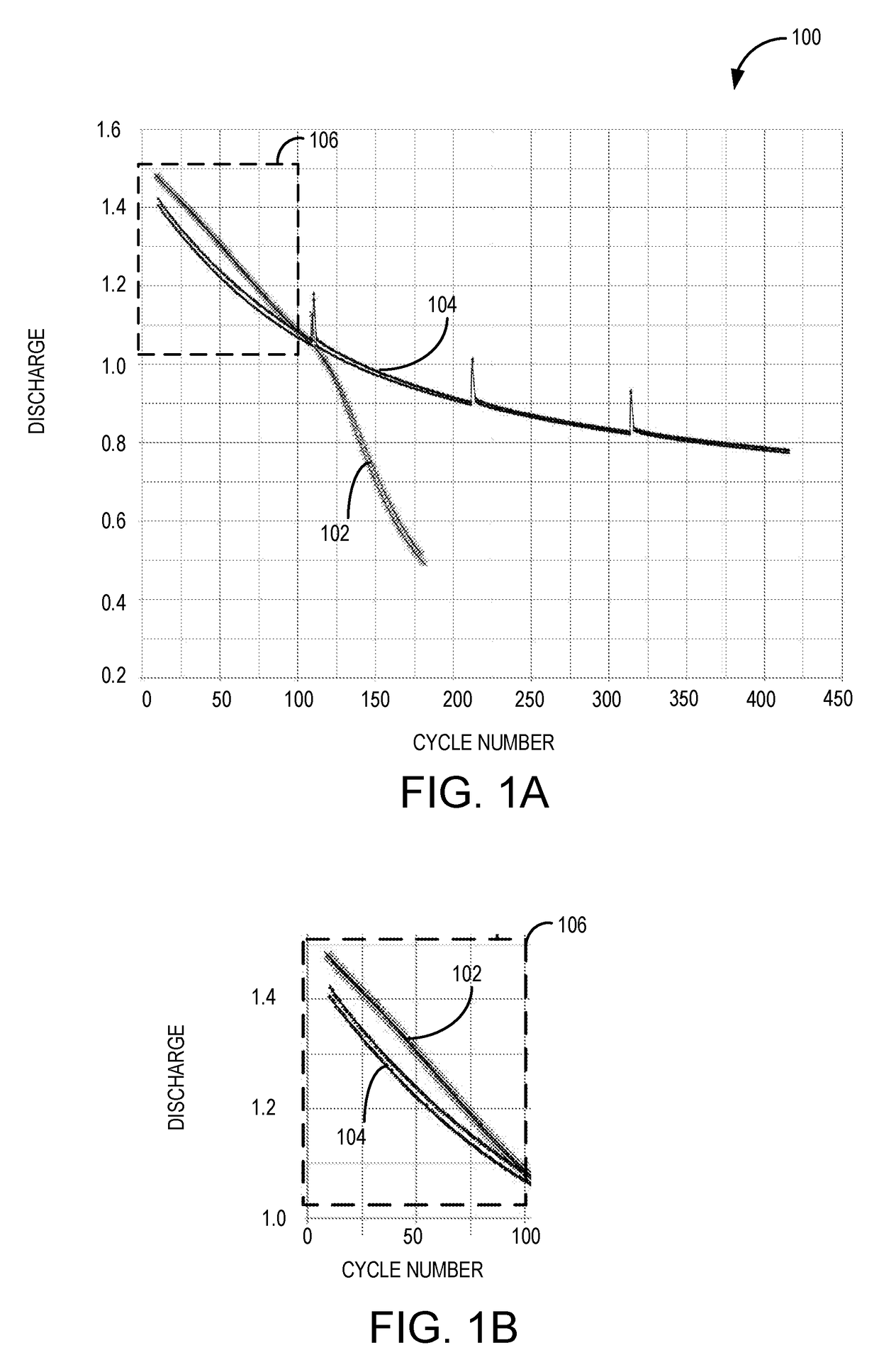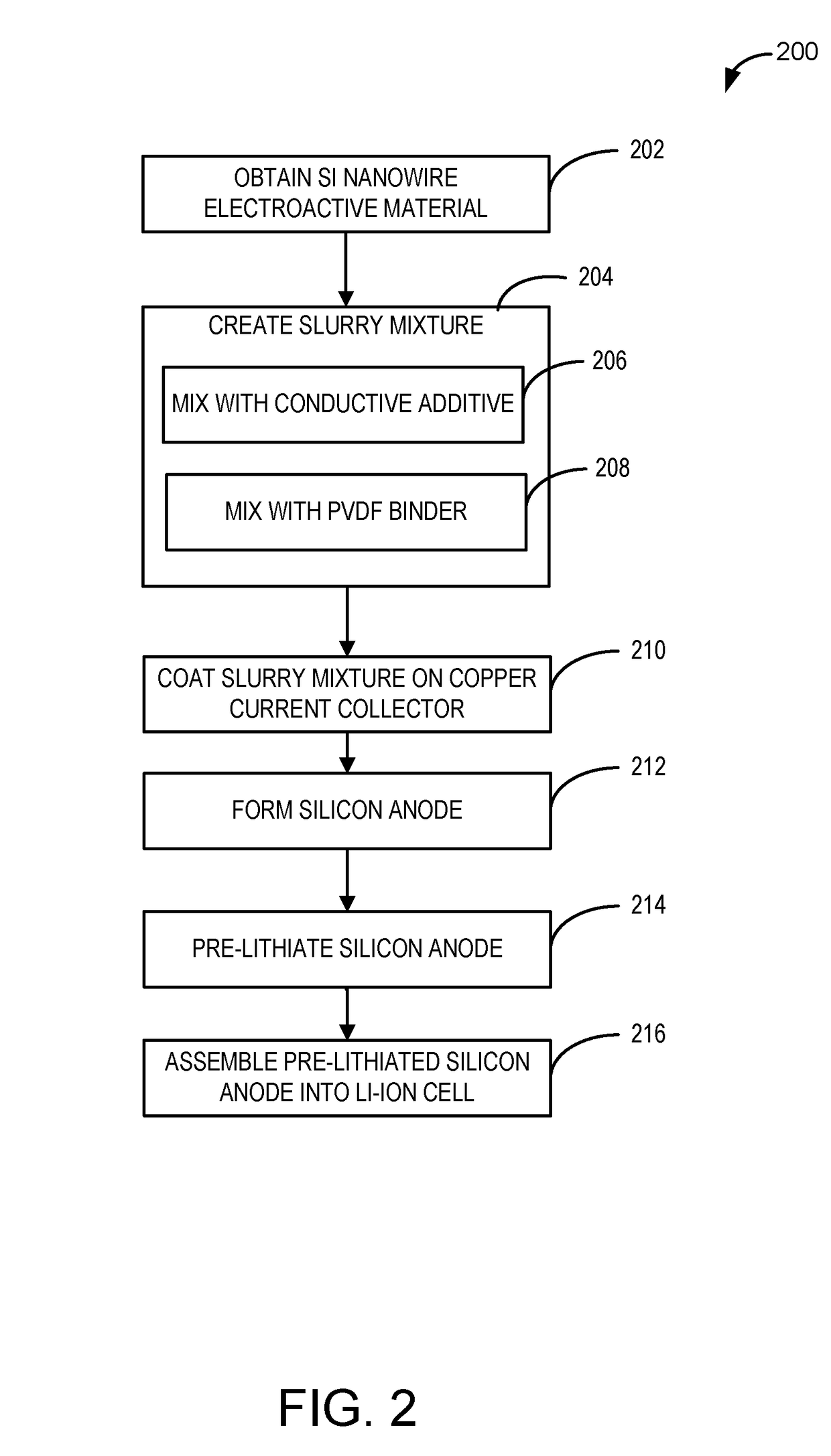Pre-lithiated silicon anodes with pvdf binder
a technology of polyvinylidene fluoride and silicon anode, which is applied in the field of lithium ion cells, can solve the problems of reduced cycle life, mechanical damage to the battery structure, and relatively large volume change of silicon, and achieves the effects of enhancing long-term cyclability and capacity retention, enhancing strength, and more benign processing conditions
- Summary
- Abstract
- Description
- Claims
- Application Information
AI Technical Summary
Benefits of technology
Problems solved by technology
Method used
Image
Examples
Embodiment Construction
[0019]Aspects of this disclosure will now be described by example and with reference to the illustrated embodiments listed above. Components, process steps, and other elements that may be substantially the same in one or more embodiments are identified coordinately and are described with minimal repetition. It will be noted, however, that elements identified coordinately may also differ to some degree.
[0020]The present application relates to a Li-ion rechargeable battery which comprises a Si anode capable of intercalating and releasing lithium, a positive electrode, a separator, and a nonaqueous electrolytic solution consisting of a lithium salt and at least one organic solvent. The Si anode may be fabricated, as described in FIGS. 2 and 3, to improve the cycle life of the Li-ion cell. The fabrication of the pre-lithiated Si based anode may preserve the nanostructure of the Si. Preserving the nanostructure may counteract the volume changes during cycling which may pulverize the Si n...
PUM
| Property | Measurement | Unit |
|---|---|---|
| weight percent | aaaaa | aaaaa |
| weight percent | aaaaa | aaaaa |
| wt. % | aaaaa | aaaaa |
Abstract
Description
Claims
Application Information
 Login to View More
Login to View More - R&D
- Intellectual Property
- Life Sciences
- Materials
- Tech Scout
- Unparalleled Data Quality
- Higher Quality Content
- 60% Fewer Hallucinations
Browse by: Latest US Patents, China's latest patents, Technical Efficacy Thesaurus, Application Domain, Technology Topic, Popular Technical Reports.
© 2025 PatSnap. All rights reserved.Legal|Privacy policy|Modern Slavery Act Transparency Statement|Sitemap|About US| Contact US: help@patsnap.com



